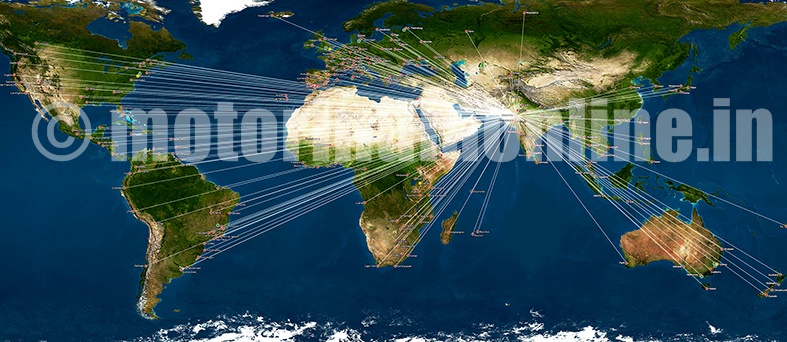As per the Automotive Mission Plan 2016-26 (AMP) the Indian auto components industry may attain an impressive $200 billion in revenue by 2026, with exports of $80 billion. The strong belief stems from the fact that the country’s auto component sector registered a CAGR of 14 per cent during FY 2006-16. A minute detail also tracks that India’s exports of auto components increased at a CAGR of 11.31 per cent, during FY09-FY16, with the value of auto component exports increasing from $5.1 billion in FY09 to $10.8 billion in FY16.
It has to be noted that Europe accounted for a volume share of 36 per cent during FY16 in Indian auto component exports, followed by Asia and North America with 25 per cent each in same year. Add to this the rapidly globalizing world is opening up newer avenues for the transportation industry, especially while it makes a shift towards electric, electronic and hybrid cars, which are deemed more efficient, safe and reliable modes of transportation.
Over the next decade, this will lead to newer verticals and opportunities for auto-component manufacturers, who would need to adapt to the change via systematic research and development. The Indian auto components industry is thus set to become the third largest in the world by 2025. Indian auto-component makers are well positioned to benefit from the globalization of the sector as exports potential could be increased by up to four times to $40 billion by 2020.
While the auto component suppliers are making their presence felt, even the home grown OEMs are having merry of the opportunities out there. They are not limited to SAARC region but are intruding even in the markets like ASEAN, Middle East and Latin America. A look at exports trends from SIAM will give us an idea how the exports for commercial vehicle is growing. In the year 2015-16 India exported over 1,01,689 commercial vehicles as compared to 86,939 vehicles shipped out in 2014-15. From April to November 2016, the total CV exports stood to 75,104 units.
Challenges and opportunities
Our meetings with companies participating at the international shows convey that there many opportunities globally amid a few challenges. One of the many challenges that Indian auto component suppliers face in the export market, including OEM and aftermarket, is with the quality of product. However this is fast changing, with many companies adopting international quality standards and successfully addressing quality concerns. The second challenge has always been related to scale. Indian exporters are expected to function on a bigger scale given the market size in countries like US and Europe. Committing resources and quality seems to be the first strategy for success when it comes to exports. The third challenge is related to logistics and packaging for which companies are tying up with JIT (Just in Time) third party logistic firms and addressing the concern with a well-planned supply chain. If one has all the right strategies in place, then success will not be unattainable. Indian component companies are competitive in a range of products like fasteners, valves, brake linings, forgings, castings, and chassis parts, among many others. They are also showing great traction in high-technology products like fuel injection equipment and catalytic converters where one has to work with an OEM partner.
Major global OEMs have made India a component sourcing hub for their global operations. Several global Tier-I suppliers have also announced plans to increase procurement from their Indian subsidiaries. India is also emerging as a sourcing hub for engine components, with OEMs increasingly setting up engine manufacturing units in the country. There is increased investment in R&D operations and laboratories, which are being set up to conduct activities such as analysis and simulation, and engineering animations. The growth of global OEM sourcing from India and the increased indigenization by global OEMs is turning the country into a preferred design and manufacturing base. Domestic players are acquiring global companies to gain access to latest technology, expand their client base and diversify revenue streams which are all signs of India doing fairly well at exports. Owing to all these developments, industry experts feel that exports will account for as much as 26 per cent of the market by 2021.
The following section focusing on exports from India gives an indication of how Indian companies are catching global attention by making in India for the world.
By N. Balasubramanian & Rajesh Rajgor
